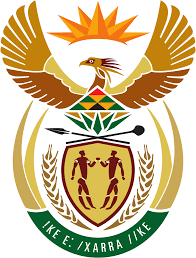South Africa
South Africa Home

Destination South Africa, a Nations Online profile of the southernmost country in Africa. The Rainbow Nation borders Botswana, Mozambique, Namibia, Swaziland and Zimbabwe. The small Kingdom of Lesotho is enclosed as an enclave.
The country covers an area of 1,221,000 km²; compared; it is somewhat larger than two times the size of France, or slightly less than twice the size of the US state of Texas.
South Africa has a population of 60 million people (official estimate 2021). The country's administrative capital is Pretoria (Tshwane), legislative capital is Cape Town and judicial capital is Bloemfontein (Mangaung); the largest city is Johannesburg. South Africa has 11 official languages: Afrikaans, English, Ndebele, Northern Sotho, Sotho, Swazi, Tswana, Tsonga, Venda, Xhosa, and Zulu. The most spoken first languages are Zulu (isiZulu - 23%), Xhosa (isiXhosa - 16.0%), and Afrikaans (13.4%).
The most important religions in South Africa are various branches of Christianity (80%).
Background:
Often called "the Rainbow Nation," South Africa is one of Africa's most ethnically diverse countries. The land was inhabited by pastoral Khoekhoe (Khoi), the hunter-gatherer San, the Xhosa, the Zulu nations, and various other indigenous tribes when Dutch settlers arrived in the middle of the 17th century, much to the disadvantage of the Khoekhoe along the southern and western coastal strips. It was the beginning of a centuries-long aggressive colonial expansion, mainly by settlers of Dutch, German, and French Huguenot origin.
In 1795 the British took over the Cape from the Dutch; seven years later, the colony was returned to the Dutch government, only to come under British rule again in 1806. This circumstance and the rise to power of the Zulu king Shaka forced many Dutch settlers (the Boers) to move north and east to find new land to establish their republics. The discovery of diamonds (1867) and gold (1886) spurred wealth and immigration and intensified the subjugation of the native inhabitants until the end of the 20th century.
The 1990s brought an end to apartheid with South Africa's transition to democracy and Nelson Mandela's inauguration as the country's first democratically elected President in 1994.
Sign in to add your comment.
Suggested Pages
Click the label to explore South Africa's Veterinarian Universities
Official Name:
Republic of South Africa
Short form: South Africa
South Africa's name in native (official) languages:
Afrika Borwa (Pedi, seSotho, Tswana)
Afrika Dzonga (Tsonga)
Afurika Tshipembe (Venda)
Mzantsi Afrika (isiXhosa)
Ningizimu Afrika (siSwati, isiZulu)
Suid-Afrika (Afrikaans)
ISO Country Code: za, ZAF
Time:
Local Time = UTC +2h
Country Calling Code: +27
Capital Cities:
Pretoria (Tshwane) (administrative centre)
Bloemfontein (Mangaung) (judicial center)
Cape Town (legislative centre)
Other Cities: Johannesburg, Durban (Thekwini), Nelspruit, Polokwane, Port Elizabeth (Gqeberha)
Government:
Type: Republic
Independence: 31 May 1910 (from the UK); South Africa became a republic in 1961.
Constitution: 1996
Constitution of the Republic of South Africa Geography:
Location: Southern Africa, at the southern tip of the African continent.
Area: 1.2 million km² (470,462 sq. mi).
Terrain: plateaus, savanna, desert, mountains, and coastal plains.
Climate: moderate, mostly semiarid; subtropical along the east coast, similar to southern California or the Mediterranean. Like other places in the southern hemisphere, summer lasts from December to February. Winter in South Africa lasts from June to August.
